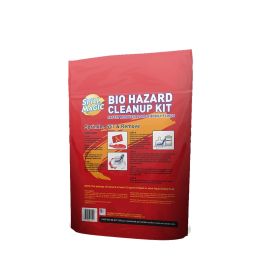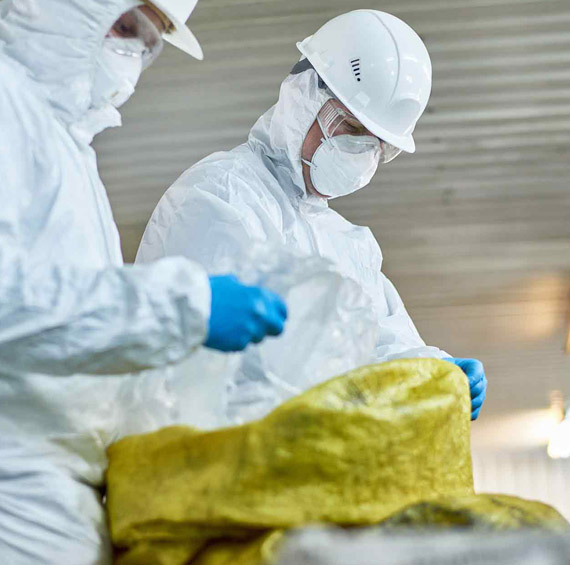Specialist Biohazard Cleaning and Decontamination for Blood, Bodily Fluids, and Hazardous Materials
The prospective health and wellness dangers associated with exposure to biohazards underscore the critical demand for meticulous handling and thorough cleanup. As we browse the complex landscape of biohazard cleaning, comprehending the subtleties of guidelines, conformity, and the specific devices at play ends up being critical in making sure a complete and safe purification procedure.
Wellness Dangers of Biohazard Direct Exposure
Exposure to biohazards positions significant health and wellness dangers that can cause severe effects for areas and people alike. Biohazards include a variety of biological materials, consisting of blood, physical liquids, mold and mildew, germs, infections, and other potentially infectious products. When individuals enter into call with these biohazards, whether via accidents, incorrect handling, or environmental exposure, they encounter the danger of contracting severe health problems or conditions.
One of the main health threats associated with biohazard direct exposure is the transmission of transmittable conditions. Bloodborne virus such as HIV, liver disease B and C, and numerous bacteria can be present in biohazardous products, posturing a direct risk to human health. Breathing in airborne biohazards like mold spores or coming into call with polluted surfaces can additionally cause respiratory system concerns, allergic reactions, and other unfavorable health impacts.
Moreover, biohazard direct exposure can have long-lasting health and wellness implications, with some diseases manifesting years after the initial call (Blood Cleanup). Therefore, it is crucial to focus on correct biohazard cleaning and purification to mitigate these health and wellness dangers and ensure the safety and security of people and neighborhoods

Specialized Educating for Biohazard Cleanup
When it involves managing biohazard cleaning effectively and securely, specialized training plays a basic duty in making sure correct purification treatments are followed. Biohazard clean-up calls for specific knowledge and skills to properly mitigate threats connected with bloodborne virus, bodily fluids, and harmful products. Specialists learnt biohazard clean-up go through strenuous guideline on just how to safely take care of, remove, and take care of biohazardous materials to avoid contamination and direct exposure.
Specialized training for biohazard cleanup covers an array of crucial topics, consisting of correct individual safety equipment (PPE) usage, bloodborne virus understanding, purification methods, and contaminated materials disposal methods. People learnt biohazard cleanup are outfitted with the essential experience to analyze contamination degrees, recognize potential risks, and execute suitable cleanup treatments in compliance with regulatory requirements.
Constant training and education are extremely important in the area of biohazard clean-up to stay updated on the most recent decontamination innovations, safety protocols, and regulations. By purchasing specialized training, biohazard cleaning specialists can successfully react to emergency situation cleaning circumstances and guard both public health and wellness and the environment.
Relevance of Correct Purification Techniques
Making use of correct purification strategies is crucial in biohazard cleaning to effectively reduce and remove hazardous materials health and wellness dangers. Reliable decontamination not only makes sure the elimination of noticeable traces of blood, bodily fluids, and various other biohazards yet likewise targets undetectable pathogens that might posture significant wellness dangers otherwise effectively eradicated. By adhering to strict purification procedures, trained experts can considerably decrease the risk of direct exposure to hazardous microbes, infections, and germs that might result in infections or conditions.
Proper purification techniques entail making use of specialized tools and anti-bacterials that are specifically made to reduce the effects of biohazards efficiently. Complete cleansing and sanitation of infected areas are vital to prevent the spread of virus and make certain a safe setting for owners. In addition, the correct disposal of biohazardous waste complying with purification treatments is vital in stopping contamination of various other surface areas or individuals.

Tools and Tools for Safe Cleanup
When dealing with blood, bodily fluids, or dangerous materials, biohazard cleansing specialists depend on specialized gear to lessen exposure dangers and extensively sanitize the damaged area. Additionally, biohazard cleaning packages consisting of anti-bacterials, absorbing products, and biohazard bags are made use of to securely contain and get rid of of contaminated products.
Advanced cleaning devices like hospital-grade anti-bacterials, HEPA-filtered vacuums, and misting equipments are employed to disinfect surfaces and remove biohazards effectively. Specialized devices such as sharps containers and biohazard garbage disposal containers are made use of to securely handle sharp things and biohazardous waste products. By utilizing the right devices and devices, biohazard cleaning experts can make certain an extensive clean-up procedure that focuses on safety and lessens health and wellness risks for both workers and owners of the afflicted area.
Rules and Conformity in Biohazard Cleansing
Correct adherence to laws and compliance criteria is paramount in biohazard cleansing to make sure the safety and security of both personnel and the setting. Government agencies such as OSHA (Occupational Safety And Security and Health Administration) directory and the EPA (Environmental Protection Firm) have actually developed details standards for biohazard cleanup procedures to lessen wellness risks and environmental contamination. These regulations cover a series of aspects including the handling, transportation, and disposal of biohazardous products, as well as the essential training and protective devices required for workers included in the cleaning process.
Biohazard cleaning business need to stay updated with these guidelines to ensure that their operations satisfy the called for safety standards. Failure to adhere to these guidelines can cause extreme consequences, including penalties, lawsuit, and jeopardizing the wellness of individuals and the setting. By complying with rigorous laws and conformity steps, biohazard cleaning companies can successfully mitigate risks and make sure a risk-free and comprehensive clean-up procedure for all events entailed.
Conclusion
In conclusion, biohazard cleansing and decontamination call for specific training, proper techniques, and adherence to policies. Exposure to blood, bodily liquids, and harmful products positions considerable wellness risks, making it essential to utilize the best devices and tools for risk-free clean-up. By complying with strict methods and standards, professionals can efficiently mitigate the dangers related to biohazard exposure and ensure the safety of both themselves and others.
As we browse the elaborate landscape of biohazard cleanup, understanding the subtleties of laws, conformity, and the customized tools at play ends up being vital in making sure a complete and safe decontamination procedure. (Blood Cleanup)
When it comes to managing biohazard cleaning effectively and securely, specialized training plays a fundamental duty in making sure appropriate decontamination procedures are adhered to.Using correct purification techniques is essential in biohazard cleanup to efficiently link lessen and get rid of hazardous products wellness risks. Additionally, biohazard cleansing kits having anti-bacterials, absorbent materials, and biohazard bags are utilized to safely consist of and get rid of of contaminated items.
Federal government firms how to clean up blood from tile such as OSHA (Occupational Security and Health Management) and the EPA (Environmental Protection Company) have established particular standards for biohazard cleanup procedures to decrease health and wellness risks and ecological contamination.